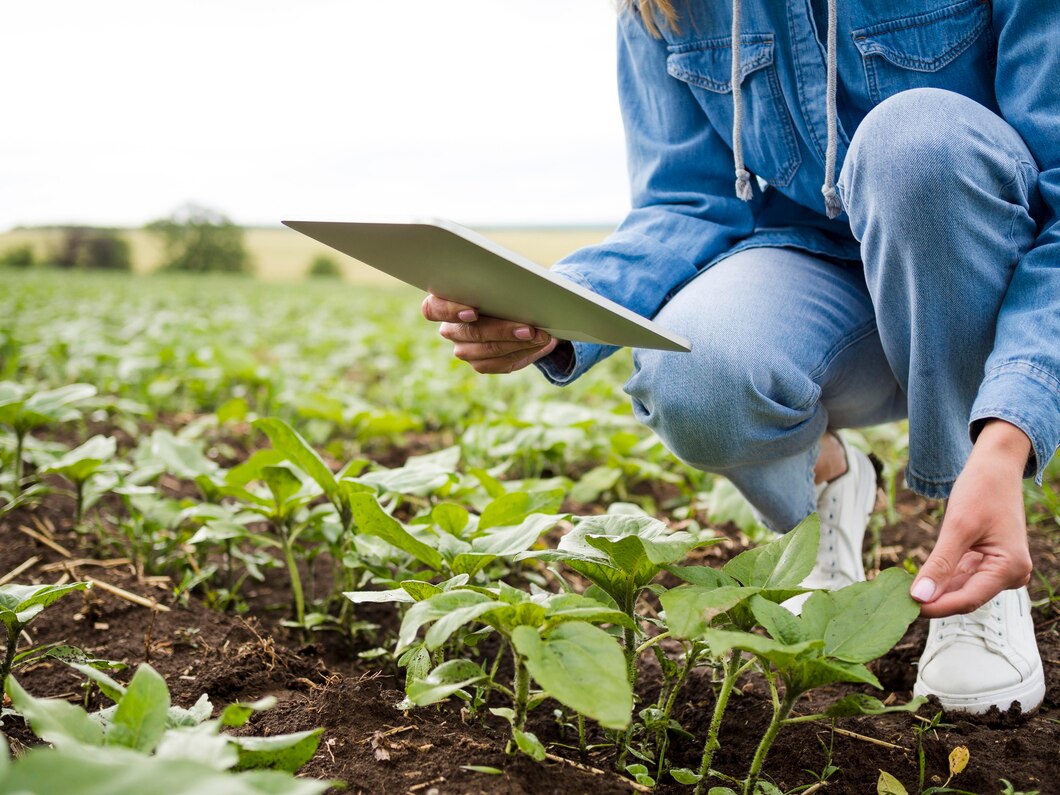Agriculture today is plagued by unprecedented challenges that demand solutions born out of collaboration. With AuxoFarm, the seed for innovation lies in innovative teamwork in agriculture, hitching a ride on collaborative knowledge to develop next-generation fertilizers. This blog touches on how formalized integrated R&D processes and deliberate agricultural product development enable teams to connect scientific observations with functional, high-performance products. We emphasize how recurring collaboration, convergence of data, and fluid feedback loops accelerate innovation while promoting environmentally friendly agricultural outcomes at a global scale.
The Role of Innovative Teamwork in Agriculture
Innovative partnership in agriculture is essential to successfully address complex issues in sustainable agriculture. In AuxoFarm, it entails scientists in soil science, microbiology, agronomy, and engineering collaborating on a regular basis to share information, align goals, and address challenges as a team. Such multidisciplinary collaboration fosters creativity and drives scientific breakthroughs that single-discipline efforts often miss.
Integration of these diverse opinions adds to soil-plant relationship and the intricacies of nutrient release understanding, all prerequisites to optimize the performance of fertilizers. AuxoFarm encourages open communication and cross-functioning, knowing that innovation can best thrive when team members contribute a range of insights. This constant debate charges rapid problem-solving and keeps product development in contact with true agricultural needs.
Leveraging Integrated R&D Processes for Efficiency
Robustly integrated R&D processes are essential for the translation of innovative concepts into reliable products. In AuxoFarm, these processes integrate laboratory experiments, field trials, and data modeling within a harmonizing framework. Frequent team meetings keep researchers from all disciplines connected, enabling the efficient transfer of experimental data and the creation of iterative improvements.
These integrated workflows accelerate fertilizer formulation development by checking outcomes against soil health indicators, microbial activity, and crop response in a continuous manner. Through this approach, AuxoFarm reduces concept-to-market time while creating products that are not just scientifically valid but also field-ready. The accomplishment of integrated R&D processes makes the company agile and responsive to emerging agricultural problems.
Agricultural Product Development as a Collaborative Endeavor
Effective product development in agriculture requires collective efforts from the conceptual stage to the testing phase and eventually market introduction. Product development in AuxoFarm is a collaborative process where researchers, product managers, and farmers have continuous involvement. This collaborative process uses scientific strictures along with pragmatic field experience to create fertilizers that are effective under different environmental conditions.
Input from the field is crucial, and the firm has pilot studies where end-users test formulations and provide feedback that guides formulation changes. This field testing authenticates AuxoFarm products are not only regulatory compliant but respond to farmer needs such as water use efficiency and crop quality. Through embracing collaboration in agricultural product development, the firm enhances product relevance and farm adoption rates.
Data-Driven Decisions in Team Environments
Data plays a critical role in modern fertilizer innovation, and AuxoFarm team harnesses this through rigorous data analysis integrated into their integrated R&D processes. Soil sensors, environmental monitors, and crop health assessments generate rich datasets reviewed collaboratively during team meetings. This facilitates evidence-based decisions on nutrient ratios, application timing, and microbial inoculant combinations.
Utilizing data analytics allows innovative teamwork in agriculture to transcend traditional trial-and-error methods, instead targeting specific soil constraints and climatic conditions. The iterative review and refinement cycle ensures products remain optimized for performance and sustainability. Such data-centric approaches position AuxoFarm at the cutting edge of fertilizer science and support smarter, more adaptive agricultural product development.
Fostering a Culture of Continuous Learning and Innovation
Beyond procedural meetings and protocols, AuxoFarm is a knowledge-sharing, experimentation, and flexibility-based culture. The company invites people to challenge assumptions, to exchange research findings, and to come together to solve unexpected setbacks, indicative of true innovative teamwork in agriculture.
Ongoing workshops, cross-functional training, and open communication channels enable continuous learning, enabling the team to rapidly react to emerging scientific advancements and market demands. This culture enables success in integrated R&D processes and ensures long-term excellence in agricultural product development. By building an innovative culture, AuxoFarm sets a strong foundation for long-term leadership in environmentally friendly fertilizer technologies.
Conclusion
The future of agriculture depends on effective collaboration and structured innovation. AuxoFarm illustrates how new collaboration in agriculture, blended with well-implemented integrated R&D processes and inclusive agricultural product development, translates scientific knowledge into viable solutions. By embracing data-driven decision making and a culture of continuous learning, AuxoFarm accelerates developments that make agriculture resilient, productive, and sustainable worldwide.




